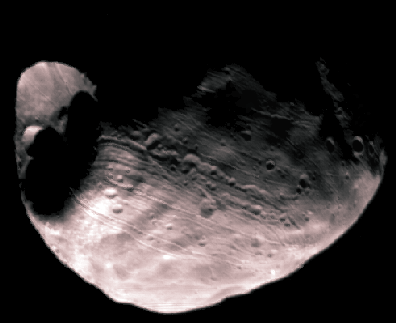Astronomy Picture of the Day
Discover the cosmos! Each day we feature a different image or photograph of our fascinating universe, along with a brief explanation written by a professional astronomer.
October 2, 1995

Phobos: Doomed Moon of Mars
Credit:
NASA/
JPL
Viking Project

